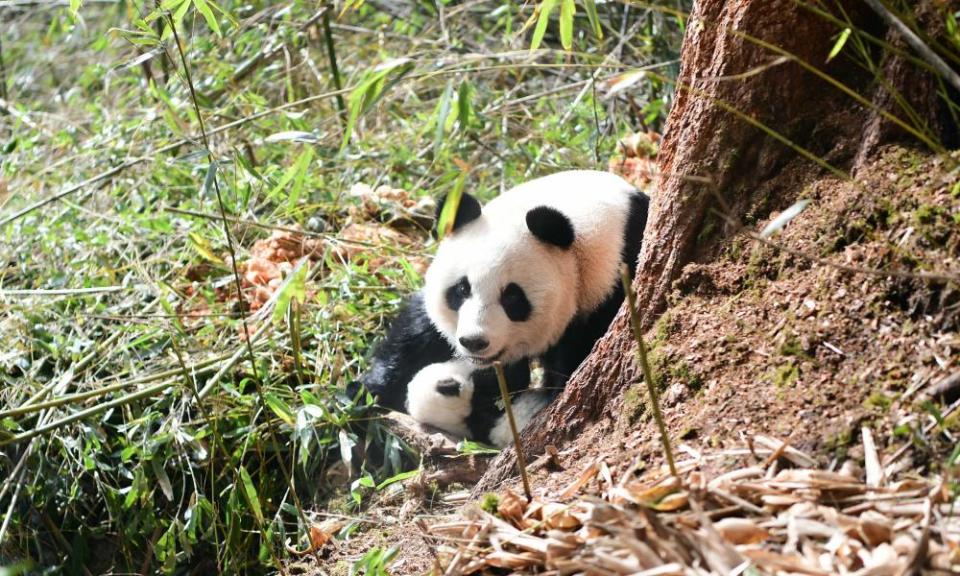Too much of a good home is bad for panda mating, say scientists

When it comes to creating the ideal habitat for giant pandas to settle down, it seems experts could do worse than heed the tale of the three bears.
Researchers have found there is a sweet spot when it comes to aiding gene flow of the animals: it is greatest when 80% of an area is considered an ideal environment for the bears – for example, containing bamboo forests. After that point, models suggest a rapid decline in the success of individuals in spreading out and reproducing.
The study appears to be the latest to suggest that the lesson of Goldilocks – that one can have too much of a good thing, even when it comes to certain properties of a bed – has broad applications, with the principle also cropping up in fields raging from exercise to exoplanet exploration.
This year, Chinese officials said giant pandas were no longer endangered in the wild as the success of conservation efforts – including work to expand their habitats – meant the animals could now be classed as “vulnerable”.
A similar shift in classification was made five years ago by the International Union for Conservation of Nature (IUCN), although the body has noted that climate change could wipe out more than 35% of pandas’ bamboo habitat in the next 80 years.
One concern is that the fragmentation of habitat could lead to pandas becoming isolated, meaning they might end up without enough food or unable to breed.
But the latest study, published in the journal Conservation Biology and based on computer models combined with genetic analyses of panda faeces in Wolong nature reserve in China, suggests that at least some imperfect habitat may bring benefits.
The study suggests that while functional connectivity – or gene flow – increases as the proportion of habitat within a landscape rises, it declines when this proportion exceeds 80%. The researchers suggest this could be because the abundance of resources means pandas have less need to spread out.
However, the team, based at Michigan State University, note that a different trend was seen for genetic diversity of the pandas: this fell slightly as the proportion of the local landscape that was habitat rose, but after about 25% it rose as the proportion increased further.
The study suggests that while a large amount of habitat is needed to support pandas, highlighting the importance of conservation, a less-than-perfect environment could bring benefits.
“The finding that the optimum habitat amount for functional connectivity is below 100% provides hope for the already disturbed areas of panda habitat and suggests that such areas should not be discounted in management plans as being unsuitable,” the team write.
“Additionally, by aiming for a ‘patchier’ landscape as the goal, plans to connect isolated panda subpopulations may be more realistic and feasible than previously thought.”
Claudio Sillero, a professor of conservation biology at Oxford University who was not involved in the research, said the study could have implications beyond panda conservation.
“Most large carnivores live in increasingly fragmented landscapes. It may well be that the messy nature of their interface with human endeavour induces more animals to disperse or travel further, and might result in greater genetic connectivity and enhanced population persistence,” he said.

 Yahoo News
Yahoo News 